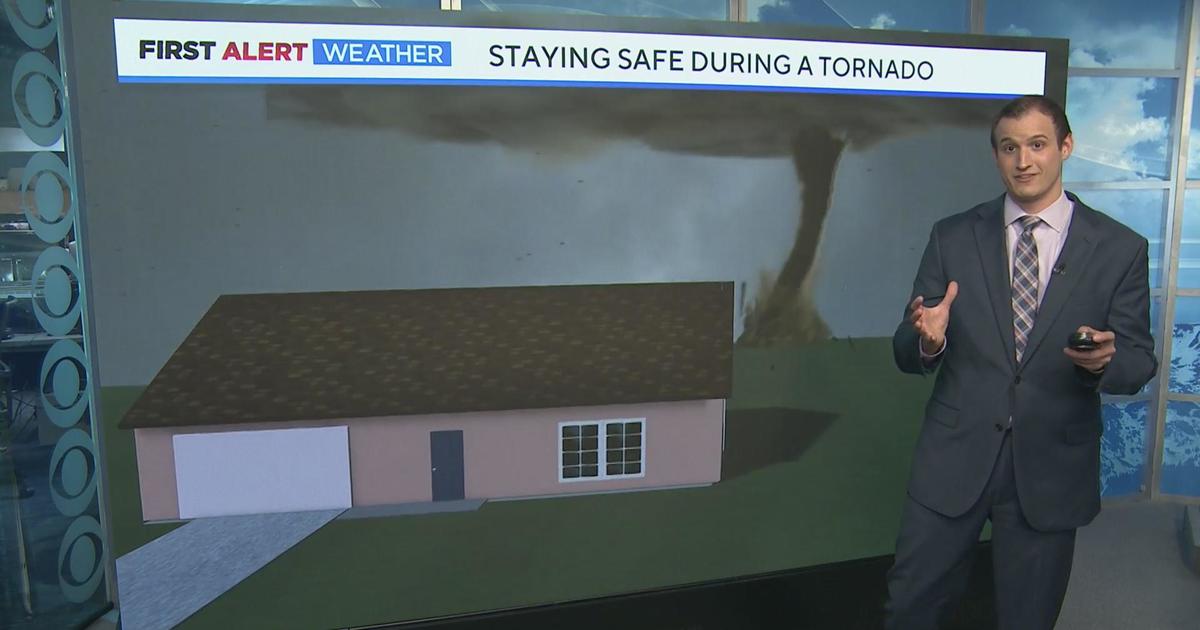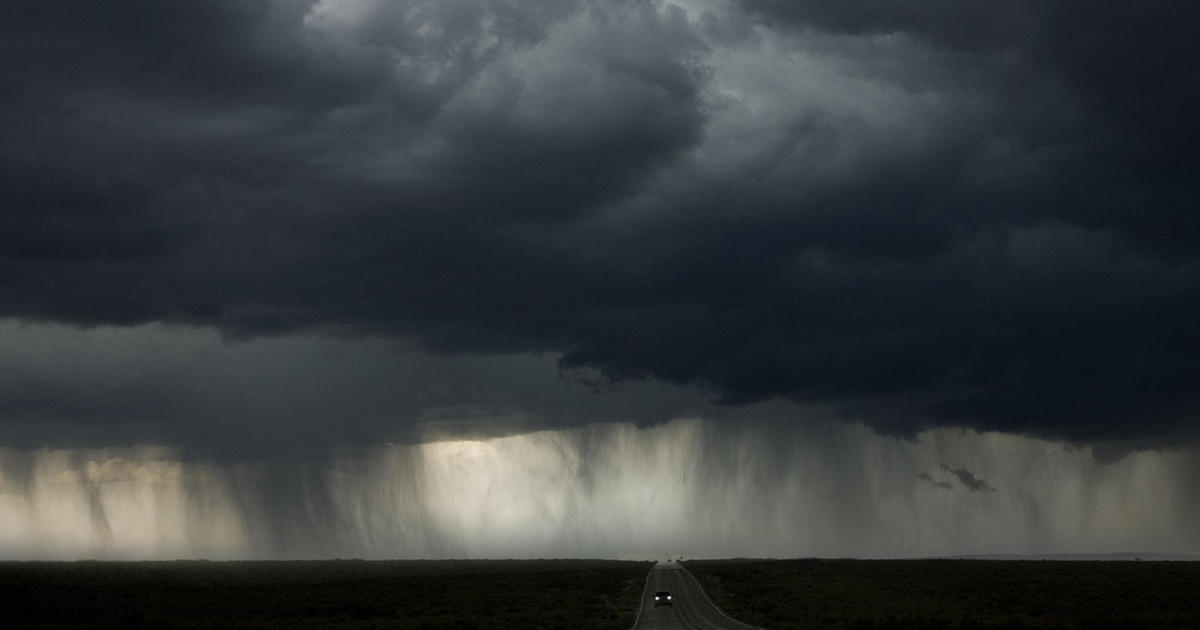Severe Weather Awareness Week: Tornadoes & Tornado Safety
DENVER (CBS4) - When someone talks about weather in Colorado, snow probably comes to mind before tornadoes.
But as it turns out twisters are quite common during the spring and summer.
About 90 percent of all Colorado tornadoes touch down between May and August but have been reported as early as February and as late as November.
The majority of Colorado's 64 counties have experienced a tornado, especially along and east of Interstate 25.
While they are less common in the mountains, they can occur in hilly terrain and at high elevations.
Colorado tornadoes are most common between 1 p.m. and 8 p.m. but can occur at any hour of the day.
GET IN, GET DOWN & COVER UP
The best advice for staying safe during a tornado is to remember the phrase, "Get in, get down and cover up!"
In other words, get inside, get down to the lower floor and cover your head.
The basement of a well-built structure, a safe room or an underground storm shelter are ideal for seeking safety.
But if those aren't available, get on the lower floor of your home or business and into the center of an interior room without doors and windows, like a bathroom or closet.
The goal is to have as many walls as possible between you and the tornado.
No matter where you decide to seek shelter, always remember to cover you head.
Most tornado injuries are caused by flying debris.
If a sturdy piece of furniture is available, get under it in addition to covering your head.
MOBILE HOMES, CARS & CAUGHT OUTSIDE
Mobile homes offer little protection from tornadoes and should be abandoned for more sturdy shelter.
If you're driving and find yourself approaching a tornado simply drive away if time allows.
But if the storm is too close and shelter isn't available, either pull over and remain buckled in your seat belt while crouching down and protecting your head, or get out and lie flat in a culvert or ditch, as far away from the vehicle as possible.
One place you do not want to be during a tornado is under a highway overpass.
Although it might feel like it provides shelter, winds from the storm can actually accelerate as they pass under a bridge, which adds to your danger.
If you're caught outside during a tornado and no shelter is available, look for a culvert you can fit into or lie flat in a ditch while covering your head.
HAVE A PLAN AT HOME, WORK AND SCHOOL
-
- Identify a place where your chance of surviving a tornado is greatest, and where all people and pets can gather
-
- Know what county you live in, as well as the cities and counties that surround you
RELATED: KNOW YOUR COUNTY, DOWNLOAD OUR FREE CBS4 SEVERE WEATHER GUIDE
-
- Have a battery operated source, such as a NOAA Weather Radio, to receive tornado watch and warning information in case power is lost
-
- Have supplies in that designated safe area, such as things to cover up with, bottled water, and a battery powered flash light
-
- Know your community's warning system
-
- Practice tornado drills
WATCHES AND WARNINGS
Tornadoes can happen at anytime but are most common from mid-May through late June in Colorado.
While meteorologists can often predict the days which will have the best potential to produce tornadoes, any thunderstorm can rapidly strengthen and produce a tornado with little to no advanced notice.
On a day when there is considerable potential for thunderstorms to produce tornadoes, NOAA's Storm Prediction Center will issue a Tornado Watch.
A watch simply means to watch the skies and pay close attention to the weather, especially over the next six hours, because things could rapidly change.
A Tornado Warning will be issued by your local office of the National Weather Service when either Doppler radar indicates a thunderstorm may be producing a tornado or if one is seen by law enforcement or trained weather spotters.
RELATED: UNDERSTANDING WATCHES AND WARNINGS
When severe weather strikes, Colorado's Weather Center and CBS4 will get the information broadcast on-air and online as soon as possible.
But thunderstorms, especially ones that produce tornadoes, can cause damage to power lines resulting in widespread power outages.
It's a good idea to have a second source for weather information available in your place or shelter, such as a battery operated NOAA weather radio.
Meteorologist Chris Spears writes about stories related to weather and climate in Colorado. Check out his bio or follow him on Twitter @ChrisCBS4.



